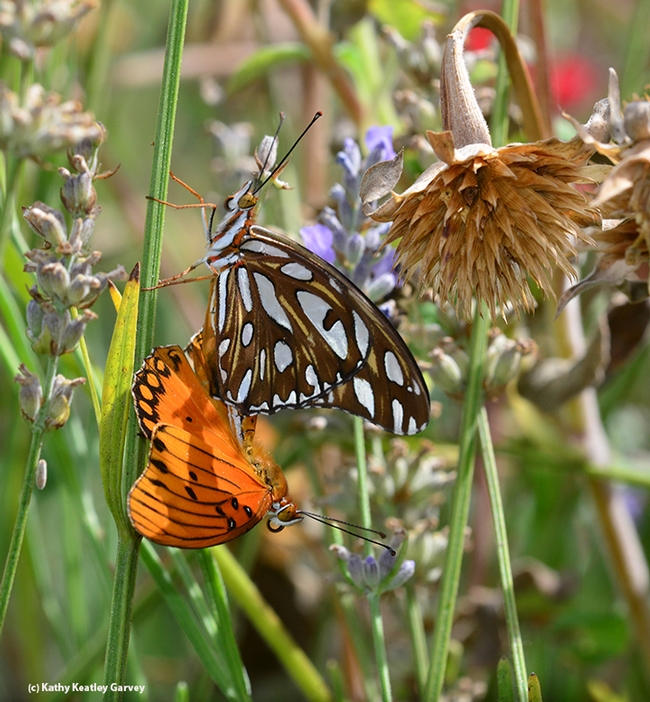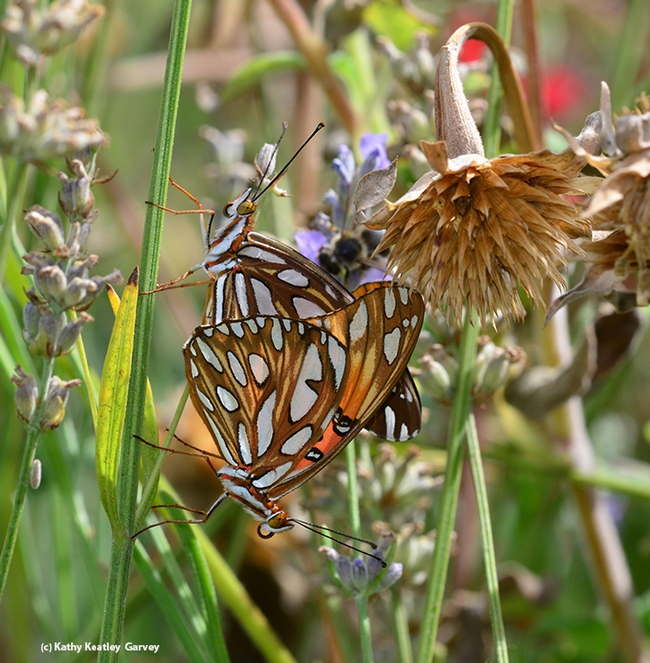Privacy, please!
You're walking by a patch of lavender and Mexican sunflower (Tithonia) and you notice that two Gulf Fritillaries (Agraulis vanillae) are doing what birds 'n' bees 'n butterflies do.
Well, some folks call it "bug porn" and some call it a "two-for" images--two insects in one photo. But in this case, this was a "three-for" image. A honey bee nectaring on the nearby lavender photobombed my image and the mating pair, still attached, clumsily fluttered off in a four-wing attempt. Appropriately enough, they headed over to the pasionflower vine, their host plant
We recall butterfly expert Art Shapiro, distinguished professor of evolution and ecology at the University of California, Davis, telling us several years ago that the showy reddish-orange butterfly is making a comeback in the Sacramento-Davis area. In the early 1970s, it was considered extinct in that area.
“It first appeared in the vicinity of San Diego in the 1870s,” he related in a previous Bug Squad blog. “It spread through Southern California in urban settings and was first recorded in the Bay Area about 1908. It became a persistent breeding resident in the East and South Bay in the 1950s and has been there since.”
Shapiro says it “apparently bred in the Sacramento area and possibly in Davis in the 1960s, becoming extinct in the early 1970s, then recolonizing again throughout the area since 2000.”
One of the Gulf Frit's favorite nectar sources is lantana (genus Lantana, family Verbenaceae.) In our yard they also lean toward the lavender and Tithonia.
There, on appropriate occasions, they like a little privacy.
Attached Images:

Two Gulf Fritillaries doing what comes naturally. (Photo by Kathy Keatley Garvey)

A butterfly passing by prompted this Gulf Frit male to react, by opening its wings.. (Photo by Kathy Keatley Garvey)

A honey bee "photobombs" the mating Gulf Fritillaries. The butterflies immediately flew away, still attached. (Photo by Kathy Keatley Garvey)